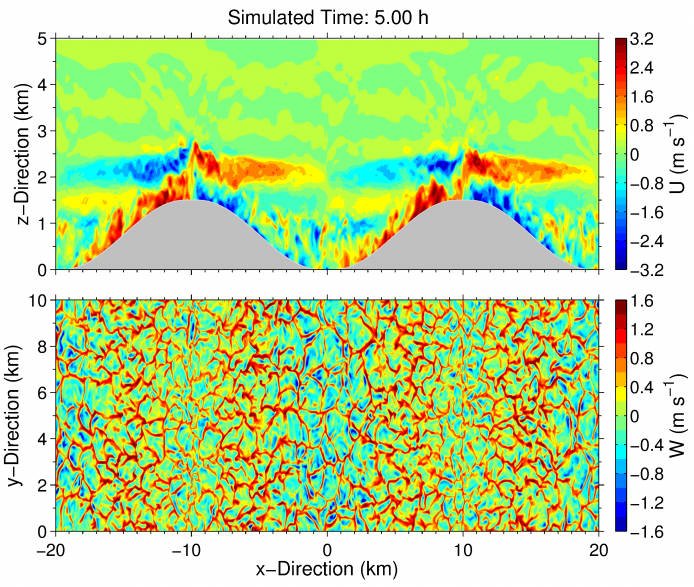Quantifying exchange processes over mountainous terrain

The vertical heat and moisture flux from the valley to the free atmosphere by thermally induced circulations will be quantified in an idealized but systematic way. The goal is to determine the sensitivity of these net fluxes to changes in various surface and atmospheric properties, including terrain geometry, atmospheric background state, land use type, soil moisture, and radiative forcing. For this purpose a comprehensive series of large-eddy simulations (LES) will be conducted by varying these properties over a range of observed values. By continuously decreasing the model resolution to the one of typical weather prediction and climate models and by comparing the result of the coarse model run to the LES result, the model error due to unresolved fluxes will be quantified. Moreover, the simulations will be analyzed in a way to improve the understanding of mechanisms of thermally induced circulations. In a last step, the attempt will be made to develop a parameterization for unresolved fluxes due to valley and slope winds as a function of surface and atmospheric properties.
Project
Project Leader:
Alexander GOHM
Members:
Lang Moritz
Leukauf Daniel
Posch Christian
Wagner Johannes
Funding Agencies:
Austrian Science Fund (FWF): P23918-N21
Project Duration:
01/12/2011 to 30/09/2016
Publications
2017
Leukauf, D.; Gohm, A.; Rotach, M. (2017): Toward Generalizing the Impact of Surface Heating, Stratification, and Terrain Geometry on the Daytime Heat Export from an Idealized Valley.
In: Journal of Applied Meteorology and Climatology 56/10, pp. 2711 - 2727.
2016
2015
Leukauf, D., A. Gohm, M. W. Rotach, and J. S. Wagner, 2015: The Impact of the Temperature Inversion Breakup on the Exchange of Heat and Mass in an Idealized Valley: Sensitivity to the Radiative Forcing. Journal of Applied Meteorology and Climatology, 54, 2199 - 2216, doi:10.1175/JAMC-D-15-0091.1.
Wagner, J. S., A. Gohm, and M. W. Rotach, 2015: The impact of valley geometry on daytime thermally driven flows and vertical transport processes. Quarterly Journal of the Royal Meteorological Society, 141, 1780-1794, doi:10.1002/qj.2481.
